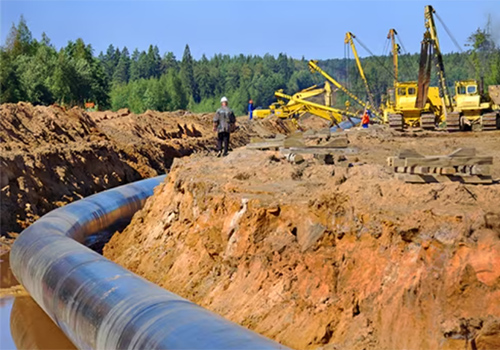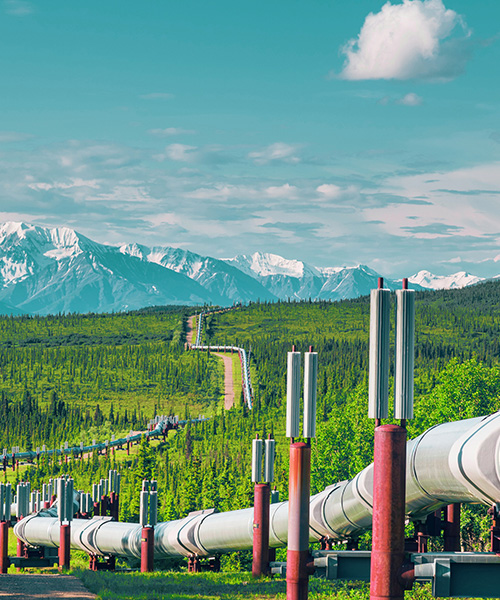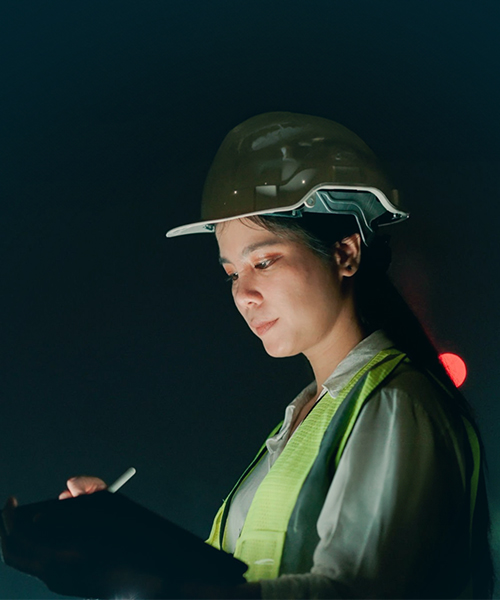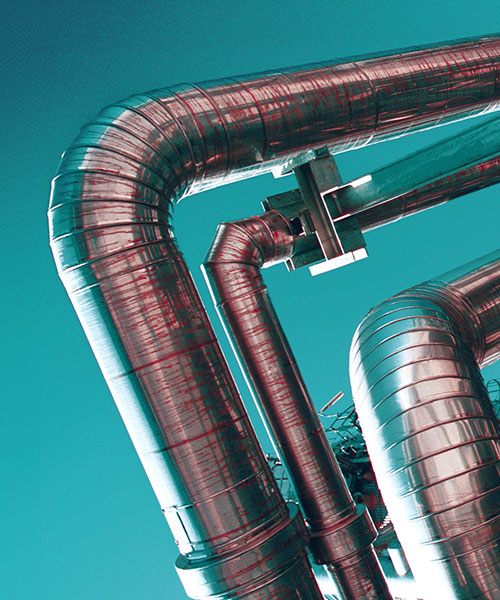July 10, 2020 • 5 min read
Pipelines: How technology is bringing certainty to projects
Our dependence on pipelines is growing. How do we make them easier to construct?
Pipelines are critical to delivering energy from its source to the end user. Over long distances, pipelines emit less carbon emissions than transporting energy with trucks, trains and ships and are much safer.
But coordinating construction contractors, community stakeholders, landowners and a myriad of approvals is challenging. And with complexity comes vulnerability to incomplete or out of date information that can eat away at budget, time, and the most critical consideration for every stakeholder: safety.
People outside the industry think you just get some pipes, weld them together and bury them in the ground. But the complexity isn’t necessarily in the mechanical design. The complexity is in the number of stakeholders, permits, authorities and landowners. It’s a high stakes balancing act that’s critical to the success of the asset.
Why is it so hard to construct a pipeline?
Pipelines cross properties, roads, railways, rivers, farms and many other terrain features, sometimes within the space of a few kilometers. And keeping track of all these considerations, as well as the quality of the pipeline being built by multiple construction contractors, all happens at the same time.

It’s no easy task to make timely decisions that fix issues before they become big problems.
“There’s a common saying in the pipeline industry: ‘you can bury your mistakes’,” says Cox. “But any defects could result in major incidents much later in the life of a pipeline. It’s a big challenge to manage different construction contractors, some of which have more advanced processes and systems than others. And you need to keep tabs on what’s happening and where it’s happening across work fronts spread over 20, 30 or even 40 kilometers.
“This gets more difficult when you’re working next to landowners who will become neighbors for the next 30 years over the life of the asset. You have to get things right the first time to maintain a social license to operate.”
Cox is no stranger to pipeline projects, with involvement in thousands of kilometers of pipelines all over the world. But when asked what would have made these projects easier, he’s quick to respond.
“When you’re building a pipeline, you want to see what’s happening, and you want to know whether the information is up to date.”
Can technology improve data accuracy?
Managers tend to rely on summary reports and often don’t have time or easy access to the volume of data coming in. This leaves the door open to missed targets for cost, schedule and quality.
However, if this information was easier to find and up to date, it would support better decision making.
“Previous pipeline projects have shown us that timely information is paramount. This made for another realization: the technology to capture and present this information in one place wasn’t as difficult as it seemed. We had separate systems for each stage of designing and constructing pipelines. We just needed to mesh these systems together and present the information in a useful way.
“That was the trigger to start building our OmniSight™ tool. This technology has since formed the basis for smarter and timely decisions that are now enabling pipeline projects to be delivered on time and to budget.”
How OmniSight works
“OmniSight gets rid of the inefficiencies and inaccuracies that exist when forms have to be filled out manually and then entered into a central database days later,” explains Cox.
“Instead of creating reports at the end of the day, inspectors use a tablet form to complete a digital report on the spot. This information is instantly uploaded and accessible through the OmniSight system. And if the inspector identifies an issue, the system generates additional questions to build a more accurate picture of what’s happening.
“It’s geographic information system (GIS) based, so construction managers can see the entire environment on a map with all the other layers turned on. It gives the exact progress through a visual picture of the construction, so you can immediately see progress across the entire work front. And the information is up to date. It’s not what we think is happening. It’s what’s really happening.”
Reducing unforeseen costs
Cox describes how OmniSight delivers better outcomes for pipeline projects.
“It gives a degree of certainty we weren’t able to get before,” says Cox. “OmniSight provides a comparison of where the project should be, and where it actually is. Our customers are always focused on total installed cost for a given pipeline project, and they need to be able to pick up cost and schedule issues as early as possible during construction.
“This also means that during the construction process, they know the percentage completion of the pipeline or facility every week. That’s not just what the contractor is telling them, but the true percentage rolled up into an accurate earned value used to assess contractor invoices. This allows them to make low cost adjustments to hit the deadline and avoid going over budget.”
There are also benefits many thousands of miles from the construction site.
“It’s an equally valuable tool for senior management,” says Cox. “One of our customers in the US had a portfolio of pipeline projects and the senior executive leadership wanted an overall picture of their status. We rolled that up into a dashboard so that they could see it live. It gave a real time view they hadn’t seen before. It was a huge hit.”
The future of OmniSight
Cox is enthusiastic about this shift toward certainty. Something that’s been all too hard to find across pipeline projects in the past.
“Delivering projects on time and on budget has been a real challenge in this industry, and it’s worth every effort to overcome the difficulties of putting a pipeline in the ground.
“You would think it’s straightforward. However, it's hard to be in control without the real time knowledge OmniSight delivers. You can see the confidence that comes from certainty that the asset will be ready on time and earning revenue when it’s meant to be.
“That’s what matters most to our customers.”






